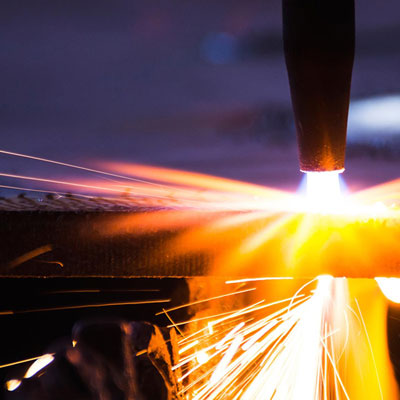Sensors, instrumentation and measurement science underpin advances in all areas of engineering, science, technology and medicine. Sensor-enabled technologies are all around us. Often we are not even aware of them or even realise what they do.
The average passenger car today has more than 200 sensors monitoring everything from speed to temperature, tyre pressure to assistance with parking. Compare this to just two or three decades back when a car might have had just a handful. In mobile phones, sensors play a vital role in enabling us to use touch screen or even voice activated commands. Supermarkets use sensors to know when they need to open more tills to save you waiting.
Technology has changed rapidly as a result of advances in sensor deployment – sensors are smaller, lighter and cheaper. However, the potential applications are even more exciting - what will our mobile phones be able to do by 2020?
We are one of the UK’s leading research centres for sensing and instrumentation. Our expertise is truly multi-disciplinary covering technology used within aerospace, automotive, manufacturing, energy, environment and health. The emphasis of our activities lies in the design, development and integration of instrumentation to tackle engineering measurement problems.
Currently, we are applying our expertise in the following areas:
-
Structural Health Monitoring – for reliability in areas ranging from land and air transport to civil engineering to superconducting magnets.
-
Legislation Compliance – how sensors can be used to help meet and monitor compliance with regulations and standards in areas such as airworthiness, greenhouse gas emissions or environmental pollutants.
-
Efficiency Improvement – how sensors can provide data to enable improvements in efficiency of aircraft, motor vehicles, wind turbines, industrial processes and manufacturing.
-
Performance Improvement – can sensors help make structures and vehicles faster, quicker or lighter?
-
Consumer Goods – accelerometers, touch and imaging sensors used in products such as mobile phones and games consoles.
Working with us
We can take a holistic approach to business requirements, starting with conceptual ideas all the way through to deploying into service environments. We have worked with partners on feasibility, development and prototyping studies. Research contracts have ranged from a few months to several years. Our ability to understand business needs and challenges allows us to deliver research solutions which can make a real impact whether on cost, reliability, efficiency or performance.
We have experience in the use of sensor and instrumentation technology to:
• Measure physical parameters (strain, temperature, pressure, displacement, velocity, acceleration) and chemical analytes
• Monitor, for example non-invasive monitoring of blood glucose levels for diabetes care or CO2 and methane emitted from landfill sites.
• Processes in the manufacture of composite materials. Other examples include response of foundation piles to dynamic and static loads or the quality of stored fruit and vegetables.
• Sense, including the presence of defects in composite materials, vibrations and impacts.
• Diagnose faults in gear boxes, bearings, composite structures including aircraft and wind turbines.
Facilities and resources
We have a number of facilities at our disposal for use when undertaking research projects. We have a range of laboratories and equipment including:
• Laser facilities such as high power short pulsed Nd:YAG and Excimer lasers used for combustion and flow diagnostics, and for the fabrication of optical fibre sensors.
• Fibre Grating Fabrication– UV laser sources, phase masks and interferometric systems to fabricate fibre Bragg gratings.
• Bespoke facilities for the development and characterisation of gas sensors.
• Amplitude masks and high resolution systems for fabrication of long period gratings.
• Portable optical instrumentation such as laser Doppler anemometers and planar Doppler velocimeter for flow measurement in applications ranging from wind-tunnels to gas turbine engines. Speckle interferometry systems for non-destructive testing. Field and air worthy fibre grating sensor interrogators. Optical coherence tomography instrumentation for medical imaging, food quality assessment and adhesive cure montoring.
• Fibre optic device fabrication: CO2 laser based fabrication of optical fibre tapers. Lapping and polishing equipment to fabricate polished optical fibre components including variable directional couplers.
• Design and manufacturing facilities to create a range of prototype microsensors.
• Testbeds onto which sensors can be mounted to evaluate their performance under different conditions.
Clients and partners
Our clients are varied due to the wide-range of applications in this field. Some of our business partners include:
• Alphasensor,
• BioDot,
• Casella Measurement,
• Fiat,
• Meggitt,
• Oxford Instruments,
• Procter and Gamble.
We have worked with a number of research councils and not-for-profit organisations including:
• Biotechnology and Biological Sciences Research Council (BBSRC);
• Engineering and Physical Sciences Research Council (EPSRC);
• Lever Hulme Trust;
• Medical Research Council;
• Natural Environment Research Council (NERC);
• Royal Academy of Engineering;
• Royal Society;
• Science and Technology Facilities Council (STFC);
• Innovate UK;
• Wellcome Trust.
